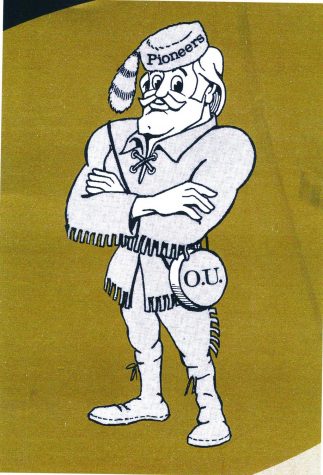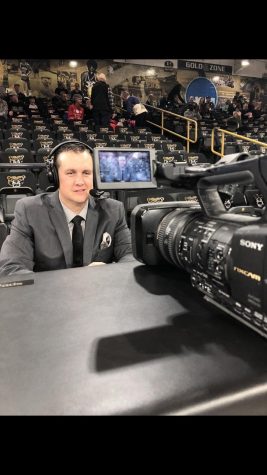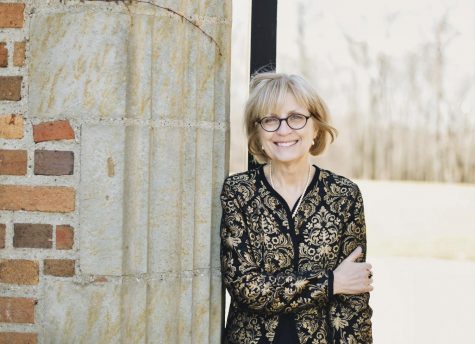Does Tinder really spark a fire?
How the internet reinvented the realm of dating with apps like Tinder, Bumble and eHarmony
Online relationships are becoming a more prevalent thing in today’s digitized world. More people are pursuing romantic relationships on sites like eHarmony, Match and apps like Tinder.
Overall, a Pew research study revealed in February 2016 that nine percent of American adults have used a dating app on their cell phone. The share of Americans who use dating apps has increased threefold since early 2013, when at that point only three percent of Americans had used these apps.
However these days, dating apps are leading the online dating leap. With apps like Tinder and Bumble, there seems to be a shift in the demographic from adult singles in their 30s seeking marriage, to young adult singles seeking short term hookups.
According to Nasdaq, young adults are now leading the surge in online dating, with usage among 18- to 24-year-olds almost tripling since Pew’s 2013 online dating study. They call it “the Tinder factor,” which means 22 percent of young adults have used a mobile dating app, compared to just 5 percent two years earlier.
A lot of these young adults are college students. LendEDU, an online marketplace for student loan refinancing, asked 9,761 millennial college students about why they use Tinder. While 72 percent of respondents said they have used it at some point, 44 percent say they use it for “confidence-boosting procrastination,” 22.22 percent of Tinder users surveyed answered that they are “looking for a hookup.” However, 4.16 percent said they are “looking for a relationship,” and 29.16 percent answered that they use the app for other reasons. Over 70 percent of college students say they haven’t actually met up with anyone from the app.
Holly Scott, senior and sociology major at Oakland University, said she used Tinder for both “confidence-boosting procrastination” and “looking for a relationship.”
“It’s harmless fun when someone you like matches with you, that’s why it’s a good confidence booster,” she said.
Scott actually matched with her current boyfriend on Tinder in February 2017. It wasn’t until seven months later that they, by coincidence, met in person due to living across the hall from each other in the Oakland University Ann V. Nicholson apartments. After getting to know each other, they discovered they matched on Tinder.
“Most of the time your matches never really amount to anything,” Scott said. “I personally didn’t use it for hooking up but I know today a lot of people, college students in particular, use it for that purpose to find other students at their university that they may not see regularly because [of] the size of the campus, or if they commute versus staying on campus.”
Sam Srauy, assistant professor of communication at Oakland, shared how he met his wife Amanda through an internet dating site.
“I realized after I graduated undergrad that my dating pool had significantly shrank,” he said. “I mean, I did date aside of the online dating world so it was one strategy along with more conventional dating strategies, but after I got my graduate degree, I started teaching students that were around my age and you don’t date students because that’s so problematic.”
Srauy said online dating just seemed logical for his situation. He used eHarmony and Match, because he thought he should default to them because they were the ones advertised on TV during the time he was seeking a relationship.
“I met lots of people, and I dated off and on for a while, but when I got to Temple University, where I eventually completed my Ph.D, I didn’t know anyone, so I decided I’d start trying out online dating again,” Srauy said. “I already had a profile, so I tried eHarmony again. I eventually met Amanda, and the rest is history.”
His wife Amanda also shared her experience using online dating sites. She said she had several friends try online dating around the same time, and they all had good experiences with it. In fact, several of her friends from the same friend group ended up getting married the same year, each of them to someone they met through online dating.
“I only used eHarmony because at the time, there weren’t that many well-known sites to choose from, so I went with one that seemed reputable,” she said. “eHarmony also had the reputation of drawing in people who were more serious about dating and not just there for casual dating.”
Since there are now more online dating sites and most of them are reputable and are easier to access via mobile app, more people, especially millennial college students, are susceptible to try it.
Heidi Lyons, associate professor of sociology at Oakland, said online and app-based dating is more common among emerging and young adults compared to older Americans.
“Emerging adulthood is viewed as a time to explore many different aspects of life such as career, worldview and romantic partners before settling down into adulthood roles,” she said.
Lyons said that compared to previous generations, emerging adults are entering higher education more than ever. This often means they move around a lot and may find themselves in new social networks.
“It used to be a lot more common to find a dating partner within the neighborhood one grew up in because people were less likely to move, but it is different now,” she said.
Lyons said emerging adults are more likely to move nowadays for their careers or for school, opposed to their parent’s generations, which poses a challenge in finding a partner because they won’t know anyone. She also said online dating can help emerging adults meet new people if they find themselves in a new area or a geographic location.
Virgil Zeigler-Hill, social-personality psychologist and professor and director of graduate training at Oakland, conducts research on interpersonal relationships. He said a lot has changed in the past couple of decades in the dating world.
“Nowadays, people can have a closer relationship than, if we say, go back 30 years, your long distance phone calls were really expensive and people were communicating via letter and you had kind of a stilted communication if you were to attempt a long distance relationship,” Zeigler-Hill said.
He thinks that the future of dating is going to be significantly based online in terms of communicating, but that people shouldn’t rely on it solely.
“I think the technology has made everything better in terms of the communicating part of a relationship, but it certainly doesn’t compensate for lack of face to face communication,” he said.





